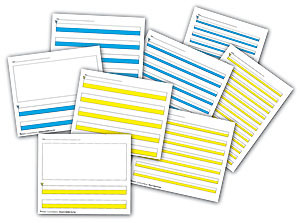Therapy putty is great for many reasons: developing a pincer grasp, picking things up, strengthening muscles, and hand therapy, among others.is a versatile and effective tool for hand strengthening, fine motor development, and sensory input. At Therapro, we offer a full range of resistance levels to meet the needs of clients of all ages and abilities. Whether you’re working on pincer grasp, improving range of motion, or building strength, there’s a putty that’s right for you.
One of the most frequently asked questions we get is:
Which color therapy putty is best for my child or client?
Putty colors correspond to resistance levels, making it easy to select and progress over time. Here’s a quick guide to help you choose:
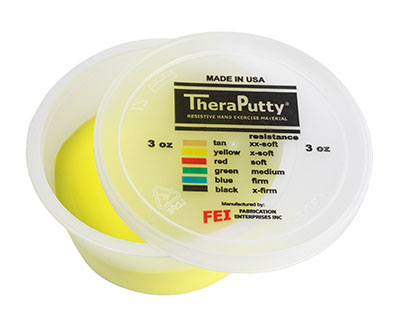
🟡 Yellow (X-Soft)
Best for: Very weak grip strength, early rehabilitation, or young children. This softest resistance is ideal for those just beginning hand therapy. It’s easy to manipulate and perfect for hiding small objects to encourage grasp and exploration.
🔴 Red (Soft)
Best for: Mild weakness or progressing from X-soft. Red offers a gentle challenge that helps strengthen without overloading. Great for continued development of hand strength and coordination.

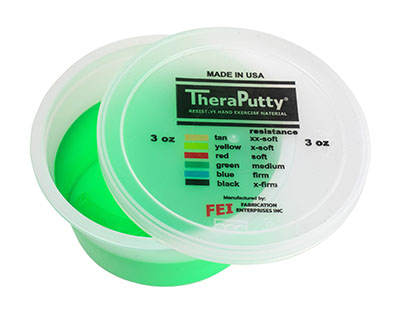
🟢 Green (Medium)
Best for: Moderate strength needs, including general strengthening and functional use. This level is often used in clinics and schools. It provides enough resistance for effective hand workouts while remaining easy to manipulate.
🔵 Blue (Firm)
Best for: Older children, teens, or adults needing a higher challenge. Firm putty increases the strengthening effect, making it ideal for progressing clients or those with behavioral or sensory regulation needs
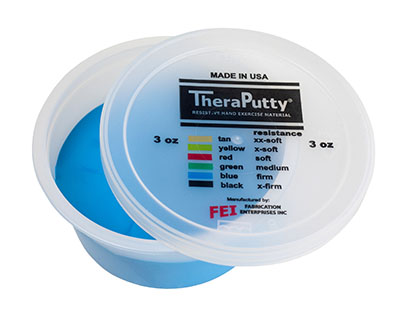
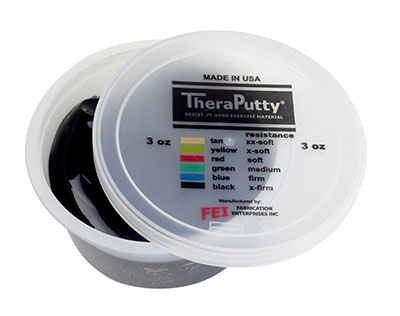
⚫ Black (X-Firm)
Best for: Maximum resistance, proprioceptive input, or sensory-seeking individuals. This ultra-firm option is extremely dense and provides intense feedback. It’s often used with adolescents or clients needing heavy work for calming and focus.
💡 Tip: Firm putties like Blue and Black can be difficult to cut and package – that’s how strong they are!
How Much Putty Should I Use?
We recommend buying enough putty to fully engage the hand — especially for activities like hiding small items inside. This encourages grasping, pinching, and active finger isolation. For clients with limited hand range, more volume makes manipulation easier.
Putty Use Tips and FAQs
“My child doesn’t like this color—can I choose another?”
Yes! While color indicates resistance, you can choose based on preference as long as the strength level is appropriate. Many families refer to it by color (e.g., “the yellow one”) for ease.
“How do I remove therapy putty from fabric or hair?”
Therapy putty is silicone-based, so it usually comes off hard surfaces easily. But accidents happen! If it ends up on fabric, in hair, or on carpet, check out our putty removal guide for practical tips.
⚠️ Caution: Lighter resistance putties (especially Yellow and Red) can stretch into stringy threads and may stain porous surfaces. Always use putty on non-porous, easy-to-clean surfaces like kitchen counters or therapy trays.

